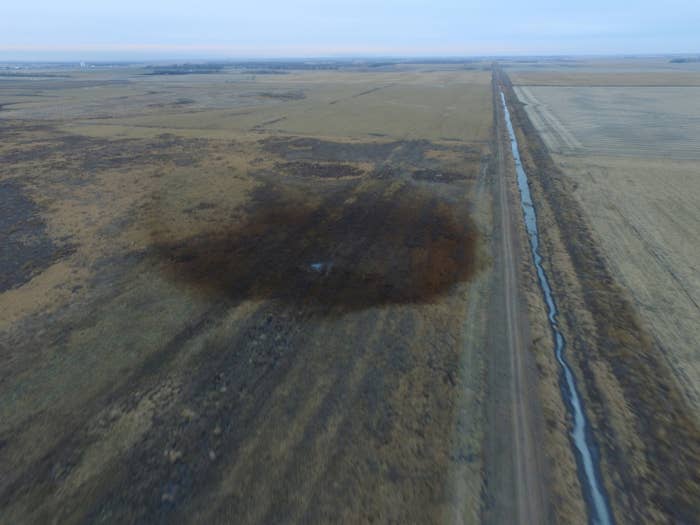
Federal officials in a new order on Tuesday outlined the steps TransCanada must take to restart its Keystone pipeline after leaking an estimated 210,000 gallons of oil in South Dakota earlier this month.
According to the order by the Pipeline and Hazardous Materials Safety Administration (PHMSA), the use of the section of the pipeline that recently leaked "without corrective action is or would be hazardous to life, property, or the environment" and requires TransCanada "to take immediate action to ensure its safe operation."
TransCanada identified the Keystone spill on Nov. 16. The company shut down the entire pipeline, which runs from Canada's Alberta region down to Gulf Coast refineries, that same day. At least 44,730 gallons of oil have been recovered from the spill site so far.
Over the weekend, TransCanada and federal pipeline regulators identified the source of the rupture. According to a preliminary analysis, the failure "may have been caused by mechanical damage to the pipeline and coating associated with a weight installed on the pipeline in 2008." Weights are generally used to hold pipelines down in potentially wet areas.
At the time of the oil release, TransCanada was using two pipeline tools, including one for cleaning. Both passed the rupture point and neither identified any leaking oil.
The damaged section of the pipeline has been removed and is being sent to a National Transportation Safety Board laboratory in Virginia for testing.
According to the company's latest update about its clean-up and recovery process, posted online Monday, TransCanada planned to restart the pipeline at a reduced pressure on Tuesday, Nov. 28. PHMSA officials confirmed they have received and approved TransCanada's plan to return to service under this order, and that the company can restart at 20% reduced pressure.
Neither PHMSA officials nor TransCanada immediately responded to questions about whether the pipeline had officially restarted operations on Tuesday.
